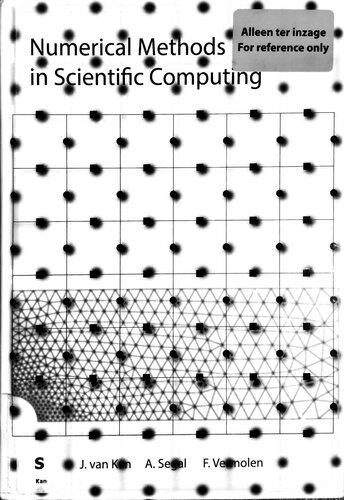

Most ebook files are in PDF format, so you can easily read them using various software such as Foxit Reader or directly on the Google Chrome browser.
Some ebook files are released by publishers in other formats such as .awz, .mobi, .epub, .fb2, etc. You may need to install specific software to read these formats on mobile/PC, such as Calibre.
Please read the tutorial at this link. https://ebooknice.com/page/post?id=faq
We offer FREE conversion to the popular formats you request; however, this may take some time. Therefore, right after payment, please email us, and we will try to provide the service as quickly as possible.
For some exceptional file formats or broken links (if any), please refrain from opening any disputes. Instead, email us first, and we will try to assist within a maximum of 6 hours.
EbookNice Team

Status:
Available4.6
33 reviews
ISBN 10: 9065623639
ISBN 13: 9789065623638
Author: J van Kan, A Segal, F Vermolen
Chapter 1 Review of some basic mathematical concepts
1.1 Preliminaries
1.2 Global contents of the book
1.3 Building blocks for mathematical modeling
1.3.1 Gradient of a scalar
1.3.2 Directional derivative
1.3.3 Divergence of a vector field
1.3.4 Gauss' divergence theorem
1.3.5 Conservation laws
1.4 Minimization
1.4.1 Elastic string
1.5 Preliminaries from linear algebra
1.6 Some theorems used in the mathematical theory
1.7 Summary of Chapter 1
Chapter 2 A crash course in PDE's
Chapter 3 Finite difference methods
Chapter 4 Finite volume methods
Chapter 5 Minimization problems in physics
5.1 Introduction
5.1.1 Minimal potential energy
5.1.2 Derivation of the differential equation
5.2 A general 1-D problem with 1st order derivatives
5.3 A simple 2-D case
5.4 Examples of minimization problems
5.4.1 Minimal surface problem
5.4.2 Minimal potential energy
5.4.3 Small displacement theory of elasticity (Plane stress)
5.4.4 Loaded and clamped plate
5.5 A 2-D problem
5.6 Theorectical remarks
5.6.1 Smoothness requirements
5.6.2 Boundary conditions
5.6.3 Weak formulation
5.7 Exercises
5.8 From PDE to minimization problem
5.8.1 Introduction
5.8.2 Linear problems with homogeneous boundary conditions
5.8.3 Linear problems with non-homogeneous boundary conditions
5.8.4 Exercises
5.9 Mathematical theory of minimization
5.10 Summary of chapter 5
Chapter 6 The numerical solution of minimization problems
6.1 Ritz's method
6.2 The finite element method in R1
6.3 The finite element method in R2
6.4 Theoretical remarks
6.5 Summary of Chapter 6
Chapter 7 The weak formulation and Galerkin's method
7.1 The weak formulation for a symmetrical problem
7.2 The weak formulation for a non-symmetric problem
7.3 Galerlin's method
7.4 Petrov-Galerkin
7.5 An example of a system of coupled PDEs
7.6 Mathematical theory
7.7 Summary of chapter 7
Chapter 8 Extension of the FEM
Chapter 9 Solution of large systems of equations
9.7 Non-linear equations
Chapter 10 The heat- or diffusion equation
Chapter 11 The wave equation
Chapter 12 The transport equation
Chapter 13 Moving boundary problems
quantitative scientific method
scientific method textbook
scientific method book pdf
3 scientific methods
3 scientific method steps
5 scientific methods of research inquiry
Tags: J van Kan, A Segal, F Vermolen, Methods, Scientific